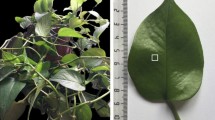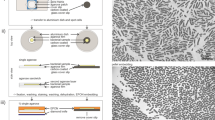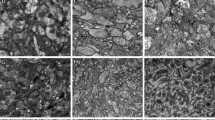Abstract
THE morphology of leaf surfaces is of considerable interest in the study of the effects of selective herbicides. In the course of investigation into the nature of some leaf surfaces, it was suspected that structure beyond the resolution of the light microscope was present. The electron microscope was therefore employed in an attempt to determine the nature of this structure. The examination of the surface of a leaf required the use of a replica technique, preferably not involving the treatment of the specimen with organic solvents, since many leaf surfaces are covered with a waxy layer which might be affected. A single-stage method involving evaporated material was therefore indicated, and though at first it seemed likely that any such method would meet with considerable difficulties, an extremely interesting technique was easily developed.
This is a preview of subscription content, access via your institution
Access options
Subscribe to this journal
Receive 51 print issues and online access
$199.00 per year
only $3.90 per issue
Buy this article
- Purchase on Springer Link
- Instant access to full article PDF
Prices may be subject to local taxes which are calculated during checkout
Similar content being viewed by others
References
Bradley, D. E., Brit. J. App. Phys., 5, 65 (1954).
Bradley, D. E., J. Inst. Metals, 83, 35 (1954).
Author information
Authors and Affiliations
Rights and permissions
About this article
Cite this article
BRADLEY, D., JUNIPER, B. Electron Microscopy of Leaf Surfaces. Nature 180, 330–331 (1957). https://doi.org/10.1038/180330b0
Issue Date:
DOI: https://doi.org/10.1038/180330b0
This article is cited by
-
Die Wasserbenetzbarkeit von Blattoberfl�chen und ihre submikroskopische Wachsstruktur
Planta (1971)
-
The surface of the leaf in normal and glossy maize seedlings
Zeitschrift f�r Vererbungslehre (1960)
Comments
By submitting a comment you agree to abide by our Terms and Community Guidelines. If you find something abusive or that does not comply with our terms or guidelines please flag it as inappropriate.



